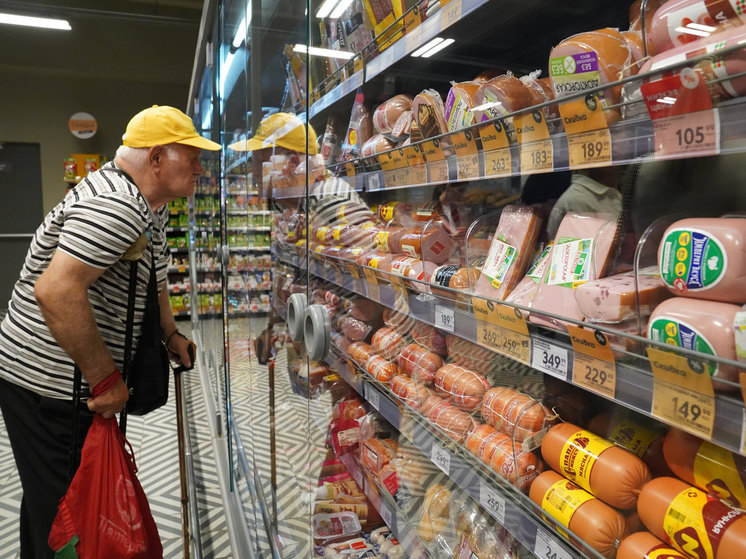“Any surprises are possible”
The Ministry of Agriculture assessed the situation on the Russian food market as stable. “For most monitored goods, the dynamics of selling prices is below inflation,” the department said. However, in reality, events in this sector of the economy change completely unpredictably, like colorful pieces of glass in a kaleidoscope. Each new configuration is different from the previous one and, in its quirkiness, is fraught with many risks.

According to the Ministry of Agriculture on May 22, over the past year in the country the price of potatoes has fallen by 5.8%, onions have fallen in price by 23.9%, and buckwheat by 15.2%. Another great news is that the cost of chicken eggs of the first and second categories continues to decline: over the past week they fell in price by 2.7-2.8%. And it’s absolutely wonderful that cucumbers and tomatoes lost in price over the week by 9.6% and 10.9% — “against the backdrop of an increase in the production of greenhouse vegetables and the arrival of products from greenhouses on the market.”
True, with the beginning of the warm season, “when the demand for meat traditionally grows, there is a slight increase in the price of certain types of these products,” admits the Ministry of Agriculture.
Previously, Rosstat issued information for April, according to which this month prices increased for: table beets (+21.9%), carrots (+7.4%), apples (+3.3), lamb (+4.6% ), olive oil (+2.4%), granulated sugar (+2.2%). In the coming weeks, food inflation as a whole will slow down due to the seasonality factor: in the summer, supply from domestic producers of fruits, vegetables and berries traditionally increases. However, risks of any kind may also materialize, primarily related to weather conditions. Who could have foreseen the abnormal night frosts in early May that hit grain crops and apple orchards?
In general, if you look at the price dynamics of the food market on an annual basis (as, in fact, this is customary in statistics), it turns out to be far from favorable. Food products rose in price by 8.33% over the year, and fruit and vegetable products by 10.61%. which is significantly higher than the average annual inflation in the country, which recently reached 8%.
And this is not surprising, since many agricultural producers — both large agricultural enterprises and small farmers — are facing great difficulties today. In the context of strict sanctions and a weak ruble, imported seeds, breeding material for livestock, and debt financing (against the backdrop of a high key rate of the Central Bank) are becoming more expensive, and labor and logistics costs are increasing. Today, the problem of personnel shortage has arisen in full force: the agricultural sector lacks approximately 200 thousand workers. According to the deputy chairman of the Board of the Rusprodsoyuz association, Dmitry Vostrikov, the high cost of food production has a lot of components — this is an increase in electricity tariffs (a significant expense item for indoor vegetable growing), and an increase in the price of fertilizers (in particular, ammophos), packaging, and so on. In general, the situation with food prices today is, to put it mildly, ambiguous.
“At the moment, food inflation is slowing down slightly, which is absolutely logical on the eve of the summer season,” says leading expert at the Center for Political Technologies, economist Nikita Maslennikov. – Now, in May-June, is the time to collect cucumbers, potatoes, radishes, green peas, salad greens, strawberries, peaches, and currants. As for fruits (apples, pears) and stone fruits (cherries, plums, apricots) — this is still to come. At the same time, there may be price fluctuations in certain groups due to instability and lateness of import supplies. Selling prices are highly dependent on logistics, and it has become more complicated over time. For some products, the inertia of the world market is evident, especially for tea, coffee, bananas and other goods conventionally called “colonial”. So far we see a trend towards their rise in price.

– You can’t answer in one word: the uncertainty is too great. Firstly, the weather conditions are unclear: at the beginning of June any surprises are possible, even frosts, as has happened more than once in a number of regions. For domestic stone fruits, low temperatures are deadly. If something like this suddenly happens, domestic prices will instantly jump. Similar imported products will also become more expensive, since suppliers always take into account the price situation on the Russian market. Secondly, it is not clear what the grain harvest will ultimately be, although it is predicted to be high – no less than 130 million tons. However, at the beginning of winter, due to unfavorable weather, the autumn crops had to be replanted. This was then compounded by recent frosts and flooding in grain-producing regions. Accordingly, there is a high probability that the country will receive ten percent less grain this year than in 2023.
In turn, this is fraught with price shifts throughout the food complex — livestock farming, baking industry, confectionery. And then the downward trend in food inflation will at least slow down, and at maximum it will turn 180 degrees for individual components until the end of August – beginning of September.


